Alzheimer's event reflects breadth of condition's impact on patients, caregivers and families
| Published: 10-02-2023 5:09 AM |
HANOVER — The crowd outside Hanover High School this past Saturday morning for the annual Walk to End Alzheimer’s was in high spirits despite the gloomy weather. The walk was one of more than 600 taking place throughout the country this fall. Participants chose either a .75- or 2-mile distance, with each route wending its way through the streets adjacent to the Dartmouth campus.
Clad in purple and white t-shirts and festive accessories, each participant held a large, brightly colored plastic flower during the opening ceremony.
As volunteer Michael Brown addressed the crowd in the moments before the walk’s start, he began asking for the flowers to be raised, one color at a time. Each color indicated its holders’ relationship to Alzheimer’s Disease.
At Brown’s instruction, yellow flowers representing caregivers were raised head-high, followed by blue for those currently suffering from Alzheimer’s, orange for supporters of the fight to end the disease, and finally purple. Slightly more numerous than the other colors, purple indicated that the flower’s holder had lost a loved one to the disease.
Looking out at what he called a “colorful display of determination,” Brown expressed confidence that “one day we will add another flower to our garden; a white flower, to represent the first survivor of Alzheimer’s.”
Article continues after...
Yesterday's Most Read Articles
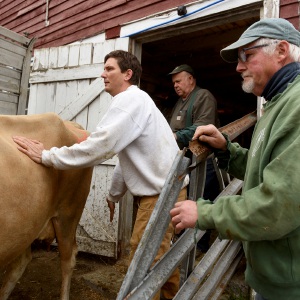 Herd departs Hartford’s last remaining dairy farm
Herd departs Hartford’s last remaining dairy farm
 Kenyon: What makes Dartmouth different?
Kenyon: What makes Dartmouth different?
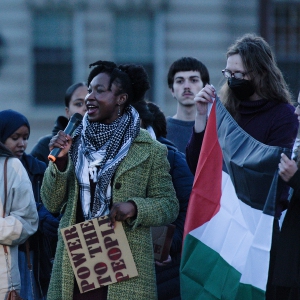 At Dartmouth, hundreds protest ongoing war in Gaza and express support for academic freedom
At Dartmouth, hundreds protest ongoing war in Gaza and express support for academic freedom
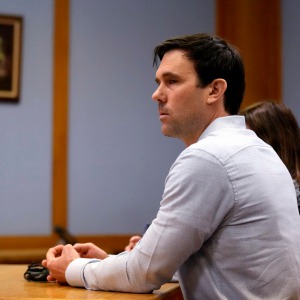 Editorial: Parker parole a reminder of how violence reshapes our lives
Editorial: Parker parole a reminder of how violence reshapes our lives
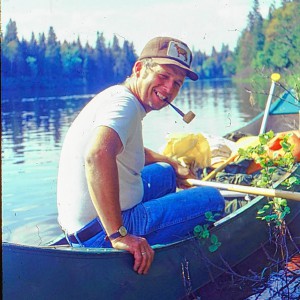 A Life: Richard Fabrizio ‘was not getting rich but was doing something that made him happy’
A Life: Richard Fabrizio ‘was not getting rich but was doing something that made him happy’
Brown, 33, of Springfield, Vt., is in his third year of involvement with the Alzheimer’s Association.
“I lost two great-grandparents and an uncle to the disease,” he said. “So I participate, I volunteer.”
Whether participating as an individual or part of a team, each walker had pledged to raise at least $100, and many raised well into the thousands. According to the event’s organizers, a total of 420 people participated in the Hanover walk, which raised more than $144,000 for the Alzheimer’s Association to fund research to fight the disease and to provide resources for those suffering from it.
“You don’t have to go very far to find people who have been impacted by Alzheimer’s,” said Tim Fisher, Upper Valley event co-chairman.
A Lyme resident, Fisher also remarked on the high turnout and sponsorship. He says he was attracted to working with the Alzheimer’s Association as a result of seeing a friend suffer early-onset dementia at age 42, and witnessing the ravages the disease inflicted not just on the sufferer, but her family and friends.
Andrea Agola, Onyinyechi Owo, and Stephen Adjei were all smiles as they crossed the finish line to cheers, cowbells, and live music. Adjei, a Dartmouth Junior from Baton Rouge, La ,explained that the trio decided to participate because they are all members of the colleges’ Minority Association of Pre-Health Students.
“We wanted to come and volunteer and support the walk to end Alzheimer’s because a lot of us are actively studying this disease. It is a very, very serious condition and we feel for all the people that are affected by it. And we just want to show that we support them,” he said.
Owe, a Junior from Ontario, said “this is a great way to bring people together because when you’re going through something that’s as hard as this disease is, I feel like just knowing that you’re not alone, that there are those who love you and support you,” is important.
Howard J. Goodrow, executive director of the Vermont Chapter of the Alzheimer’s Association, noted that this year saw the largest turnout for the Hanover walk so far, and that “there has been greater corporate support this year than in any other previous event.”
He was especially pleased to see that many young participants had turned out for the event, noting a large group of Hanover High School student volunteers and a team from Kimball Union Academy.
“That really makes me happy,” he said. “It just brings a different dynamic, and it gives them some exposure to the disease and how they can impact it early and how they can adjust their lifestyle and their habits to make it so they have a lesser chance of getting it.”
Goodrow noted that there have been positive developments in state and federal regulations in recent years that are changing the way those with dementia are treated and the resources that are available to them.
“That’s where the fundraising can make a tremendous difference,” he said.
In Vermont, for example, his organization pushed for the creation of a statewide dementia coordinator position, to help connect sufferers and caregivers to resources. The campaign was successful, and that role will be filled within the next few months.
Funds from the walk go to local education, support groups, and resource material as well as to research. Goodrow noted, for example, the importance of first responders understanding dementia when working with the public to enhance awareness and avoid potentially damaging encounters. Other public-facing workers, such as bank tellers, are an important target of outreach as well. Ten percent of the US population over age 65 suffers from Alzheimer’s or dementia. Banks may seem an odd place of focus, but Goodrow notes that most people who actually enter a physical bank branch to conduct transactions tend to be within the age group most susceptible to the disease. Educating the people who serve them can go a long way toward improving everyone’s experience.
The live music at the finish line was provided by guitar duo Andrew Brozek and Andrew Brancato, both Dartmouth students who came out to support the participants.
Christina Dolan can be reached at cdolan18020@gmail.com.

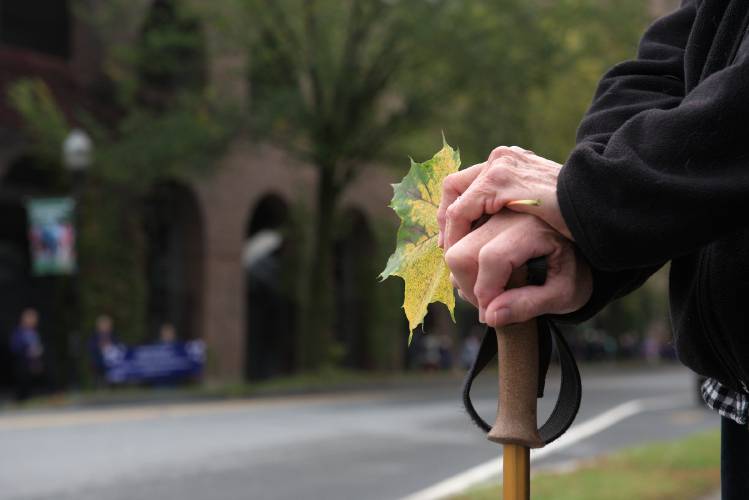
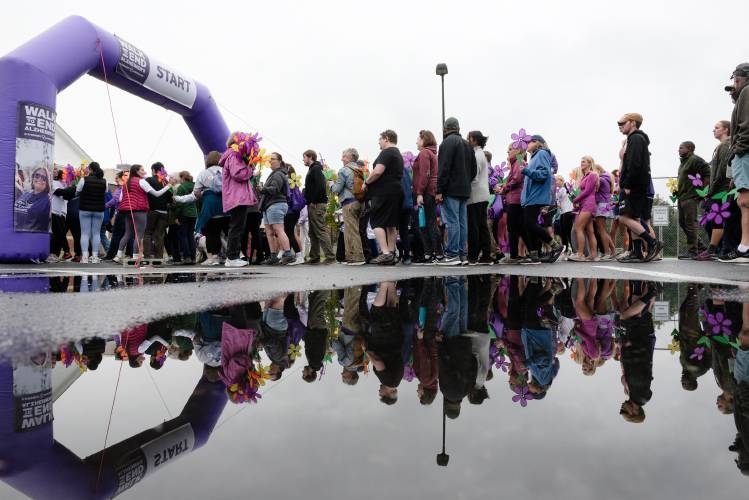
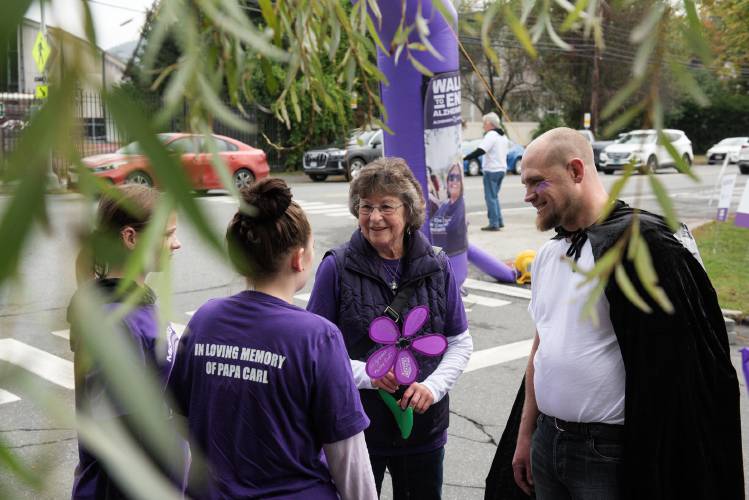
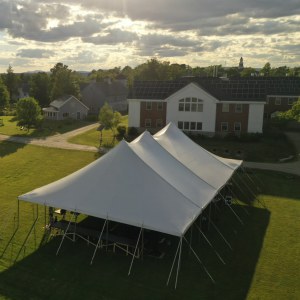 Big drop in tuition and aid is boosting Colby-Sawyer
Big drop in tuition and aid is boosting Colby-Sawyer  How NH Education Commissioner Frank Edelblut used his office in the culture war
How NH Education Commissioner Frank Edelblut used his office in the culture war
